#Household Cavalry Mounted Regiment
Text
London Day 3: Changing of the Guard! Here we come!
It’s a new day, day 3 and we have lots to do! First, I want to take you on a tour of the restaurant in the hotel, it’s fun!
It’s a nice restaurant, wide, open, and inviting, if that makes sense. They have a few walls with animal heads, but just wait…the animal heads are all made of newsprint! Most likely paper mache on the outside, if you look closely, you can see headlines and typeset in the…
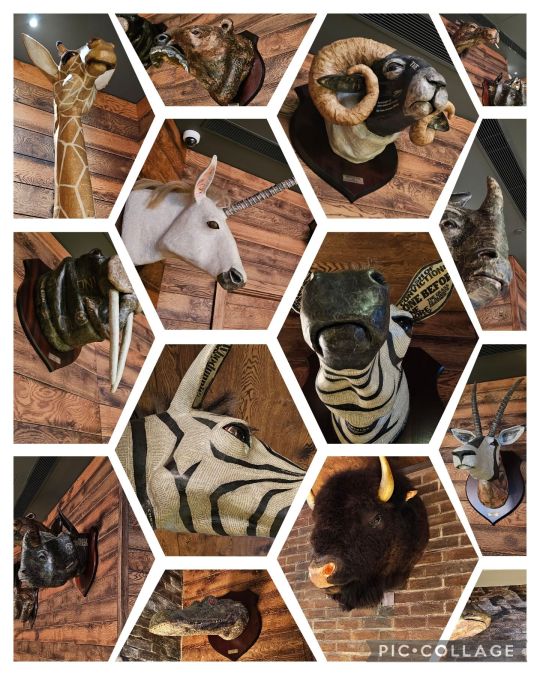
View On WordPress
#365-8#Big Ben#Breakfast#Buckingham Palace#Changing of the Guard#Clarence House#Constance Fund Fountain of Diana#Constitution Hill#Elizabeth Tower#Express Yourself#Freddy Mercury#Glasgow#Gordon Ramsay#Green Park#Hard Rock Cafe#Head on My Shoulder#Hilton#Hilton Bankside#Horse Guards#Household Cavalry Mounted Regiment#Instant Karma#John Lennon#Kensington Palace#King Charles#London#Madonna#New Beginnings#Parliament#Picadilly#Platinum Jubilee
0 notes
Text
Today a little excursion ashore and to a topic that may seem a little strange. But I'm currently working on a little project about the Household Cavalry Mounted Regiment (dating from 1660) and the Navy (please don't ask any questions yet, I'm still collecting documents). You may have seen these gentlemen and a few ladies at parades in London or somewhere else. They are on horseback and perform mounted (and some dismounted) ceremonial duties at state and royal occasions and consist of two regiments: The Life Guards and The Blues and Royals (Royal Horse Guards and 1st Dragoons) and they are the King's official bodyguards.
You might ask me now: Yes, fine, and what does that have to do with nautical matters? Well, there is a small but subtle detail on the Life Guards uniforms.

A Life Guard officer in full ceremonial uniform
You can see this hair-like detail on the helmet. That's the white plume, which in the past, but especially in the 18th and 19th centuries, was not made from hair, but from whale bone shavings from corset shops. Exciting what whale was used for.
I thought I'd share this little fact with you, maybe you'll find it as interesting as I did.
74 notes
·
View notes
Video
Admiring glance for a trooper by Frederick McLean
Via Flickr:
My photograph of a Blues and Royals mounted trooper on guard at the Whitehall entrance to Horse Guards Parade. Getting an admiring glance from a person walking past, a fairly common occurrence I think.
#Blues & Royals#Horse Guards Parade#Horse Guard#Household Cavalry#Mounted trooper#army#Household Division#Trooper#Blues and Royals#Mounted Regiment#Horse Guards#Black and White#BnW#B&W#Lumix#FZ28#flickr
3 notes
·
View notes
Text
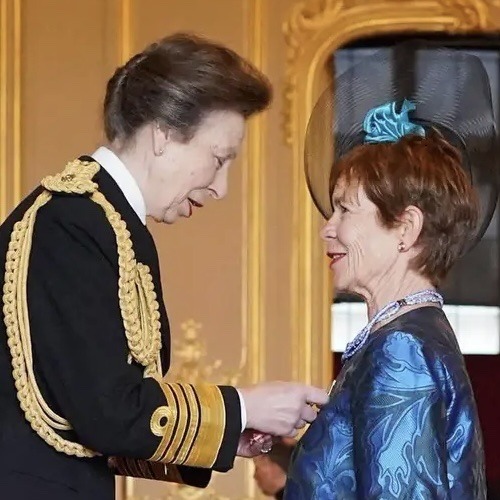

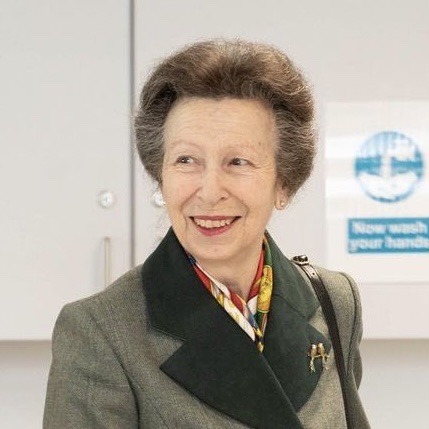
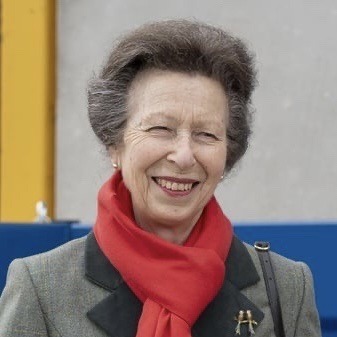

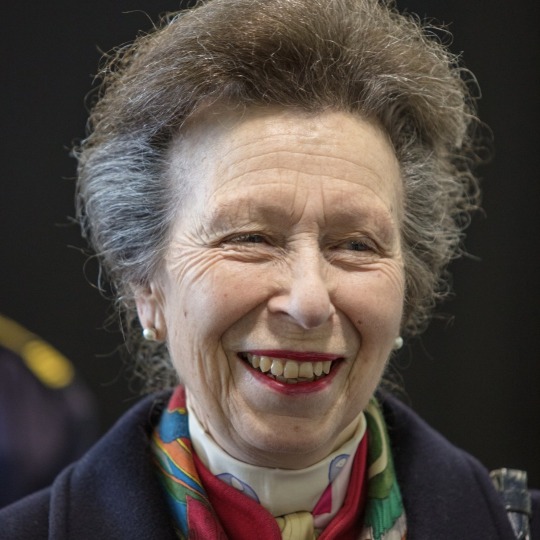
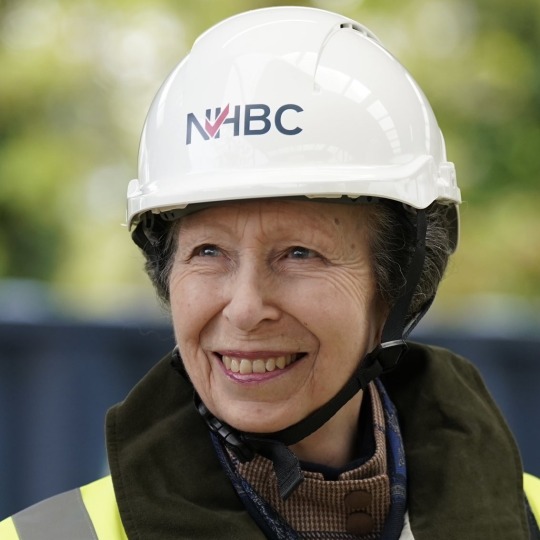
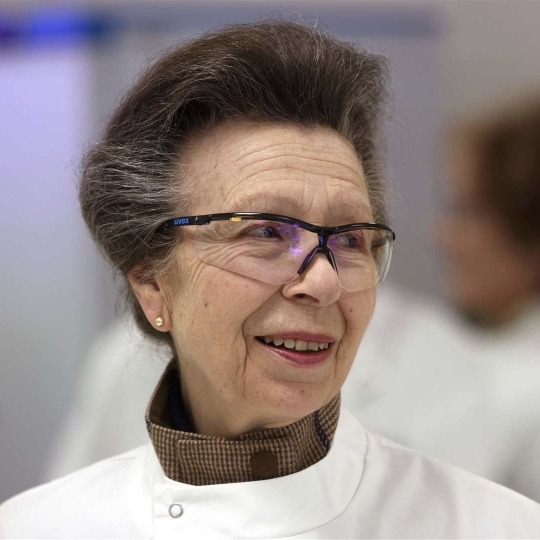
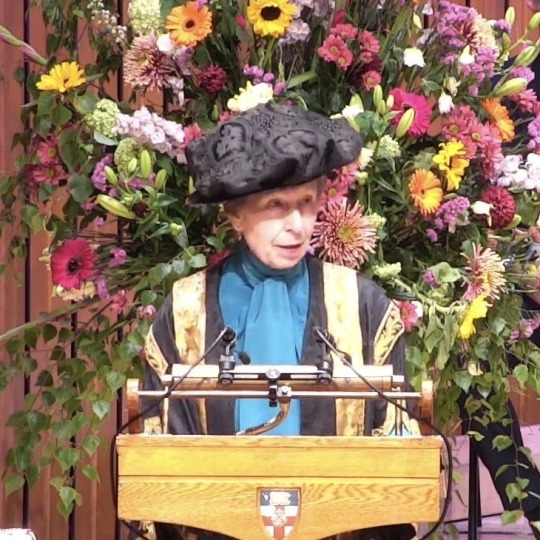
The Princess Royal’s Official Engagements in April 2024
06/04 As President of the Working Clumber Spaniel Society, held a Training Day to mark their 40th Anniversary at Gatcombe Park. 🐶
09/04 On behalf of The King, held an Investiture at Windsor Castle.🎖️
With Sir Tim Opened Tideway’s Chelsea Quay, on Chelsea Embankment in London. 🌊
With Sir Tim, As Master of the Corporation of Trinity House, attended the 70th anniversary of Re-Hallowing Service at St Olave’s Church, followed by a Reception at Trinity House. ⛪️🍾
10/04 Visited Helmshore Mills Textile Museum in Rossendale, Lancashire. 🧵👕
Visited Trawden Village Community Projects in Trawden near Colne, Lancashire. 🏡
Visited HMS VENTURER in build at Venturer Hall in Fife. ⛴️🏴
11/04 In Northern Ireland Princess Anne; 🇮🇪
Visited Fleming Agri Products Limited in Derry. 🚜
Visited Londonderry Port and Harbour Commissioners, to commemorate its 170th Anniversary. 🚢
Visited the South West College Erne Campus building in Enniskillen. 🏫
Visited the renovated Enniskillen Workhouse in Enniskillen. 💼
As Patron of Maritime UK, attended the Northern Ireland Maritime and Offshore Cluster launch Reception at Belfast Harbour Office. ⚓️🥂
12/04 As Royal Patron of the Motor Neurone Disease Association, attended the Northern Ireland Conference at Dunsilly Hotel in Antrim. 🇮🇪👨🦽
As Patron of Tenovus Cancer Care, visited a Mobile Support Unit at Bronglais General Hospital in Aberystwyth. 🏴🏥
15/04 With Sir Tim As the Former President of the Royal Association of British Dairy Farmers, presented The Princess Royal Award and Royal Dairy Innovation Award at Gatcombe Park. 🐄🥛🏆
16/04 As Royal Patron of the National Coastwatch Institution, this visited Fleetwood Station in Fleetwood, followed by a Reception at Marine Hall. 🔎🌊
As Patron of the Pony Club, visited Wrea Green Equitation Centre in Preston, to mark the 25th of the Pony Club Centre Membership Scheme. 🐴
As President of the Carers Trust, visited Sefton Carers Centre in Liverpool, to mark its 30th anniversary. 🧑🦯🩺
17/04 On behalf of The King, held two Investitures at Windsor Castle. 🎖️
18/04 Attended the Lord Mayor's Big Curry Lunch at Guildhall. 🍛
As President of The Duke of Edinburgh's Commonwealth Study Conferences, held a Dinner at Buckingham Palace for the President's Council and the Caribbean-Canada Leaders' Dialogue. 🗺️🍽️
19/04 On behalf of The King, held an Investiture at Buckingham Palace. 🎖️
21/04 Unofficial As President of the Working Clumber Spaniel Society, hosted a test day at Gatcombe Park. 🐶
22/04 As trustee of the council of St George’s House Princess Anne;
Attended a council meeting at St George’s House. 💼
Attended a Lecture in St. George's Chapel. 🎓
Attended a Dinner at the Vicars' Hall. 🍽️
23/04 On behalf of The King, held two Investitures at Windsor Castle. 🎖️
As Royal Patron of the Special Boat Service Association, held a Dinner at Windsor Castle. 🚤🍽️
24/04 As President of the Riding for the Disabled Association, visited the Cavalier Centre, and presented The King’s Awards for Voluntary Service in Farley, Much Wenlock. 🐎🏆
As Patron of Save the Children UK, visited the Lyth, Ellesmere, the birthplace of Eglantyne Jebb. 🏠
Visited the Jebb Memorial Garden at Cremorne Gardens in Ellesmere. ⛲️
25/04 Attended "DNA Day" at Illumina Centre in Great Abington. 🧬
Opened the National House Building Council's Apprenticeship Training Hub at Histon Football Club. 👷
As Patron of the Royal College of Midwives, visited Hinchingbrooke Hospital Maternity Unit. 👶🏥
As Colonel of The Blues and Royals (Royal Horse Guards and 1st Dragoons), visited The Household Cavalry Mounted Regiment at Hyde Park Barracks. 🐴💂
As Chancellor of the University of London, attended an Institute of Commonwealth Studies Reception at the Senate House, to mark its 75th anniversary. 🎓
27/04 As Admiral of the Sea Cadet Corps, attended the National Drill and Piping Competition at HMS Raleigh. 🫡⚓️
30/04 As Guardian of the Chaffinch Trust, attended a Reception at the Reform Club. 🥂
As Chancellor of the University of London, attended a Graduation Ceremony at the Barbican Centre. 🎓
As Commandant-in-Chief of the First Aid Nursing Yeomanry (Princess Royal’s Volunteer Corps), presented Coronation Medals at Wellington Barracks in London. 🫡🎖️
Total official engagements for Anne in April: 39
2024 total so far: 171
Total official engagements accompanied by Tim in April: 3
2024 total so far: 32
FYI - due to certain royal family members being off ill/in recovery I won't be posting everyone's engagement counts out of respect, I am continuing to count them and release the totals at the end of the year.
#aimees unofficial engagement count 2024#april 2024#always there to support his wife#not all engagements are listed on here#if you would like a full list plz dm me 🥰#excited for next month#two overseas visits and the start of the more summery engagements!!!#princess anne#princess royal#tim laurence#timothy laurence#not as many as previous months because she took a few days off after easter
50 notes
·
View notes
Text
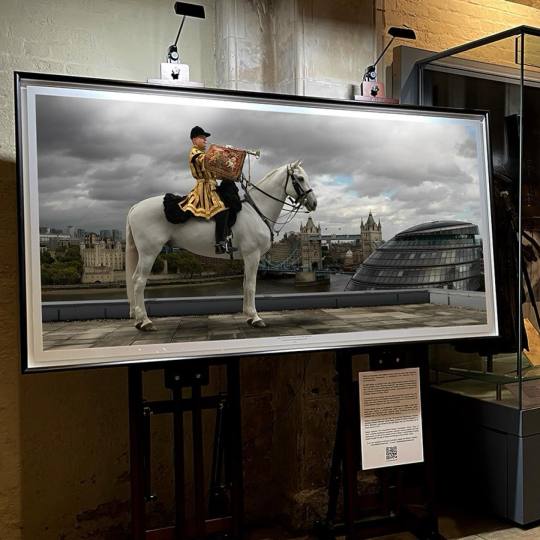

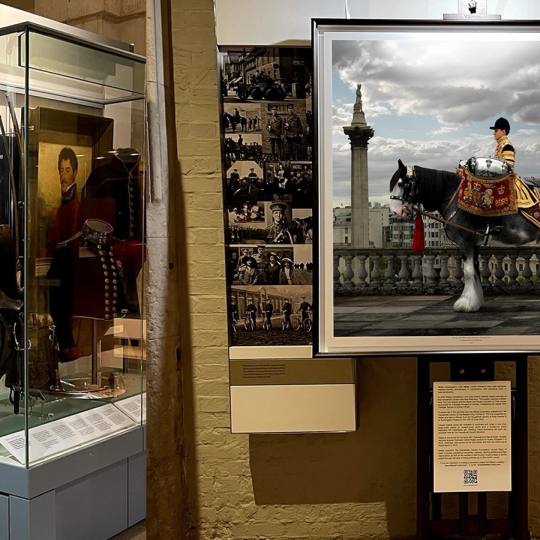
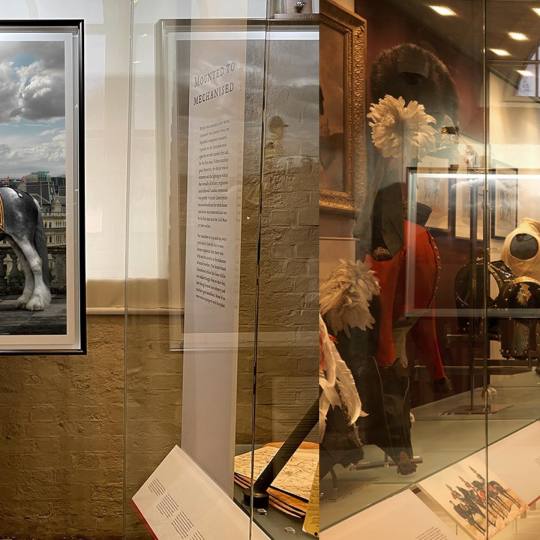
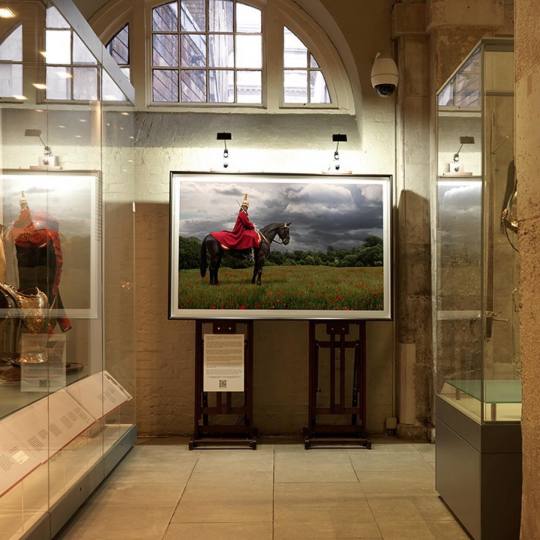
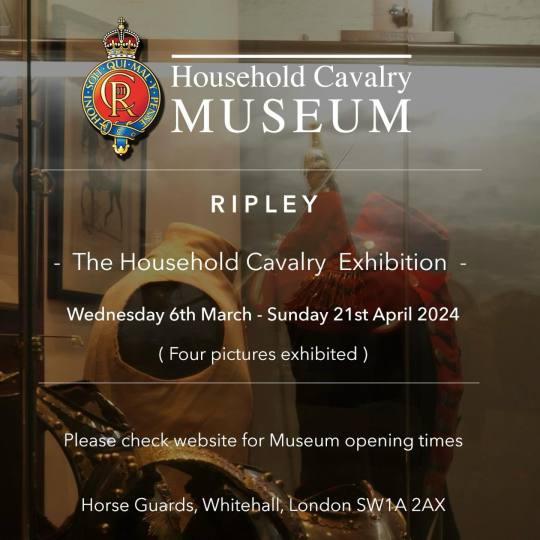
ᴛʜᴇ ʜᴏᴜꜱᴇʜᴏʟᴅ ᴄᴀᴠᴀʟʀʏ ᴇxʜɪʙɪᴛɪᴏɴ
ᴡᴇᴅ 6 ᴍᴀʀᴄʜ - ꜱᴜɴ 21 ᴀᴘʀ
We are delighted to be displaying four portraits of the Household Cavalry Mounted Regiment by @ripleyfineart exhibition.
Twelve portraits were gifted as the official Coronation present from the Household Cavalry to His Majesty King Charles III. They were presented by Ripley and senior Officers from the Household Cavalry to King Charles III at Buckingham Palace on 15 June 2023.
The museum is currently open Wed-Sun (10am-5pm) and from 1st April we will be open daily (10am-6pm).
31 notes
·
View notes
Photo

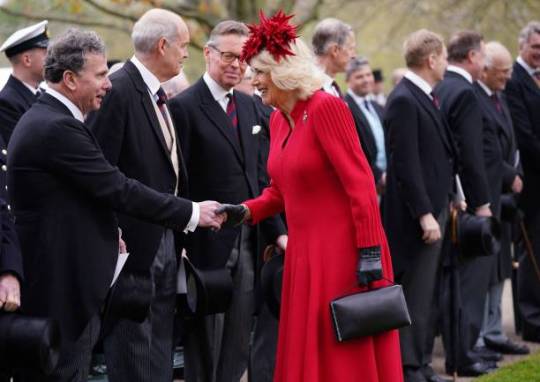
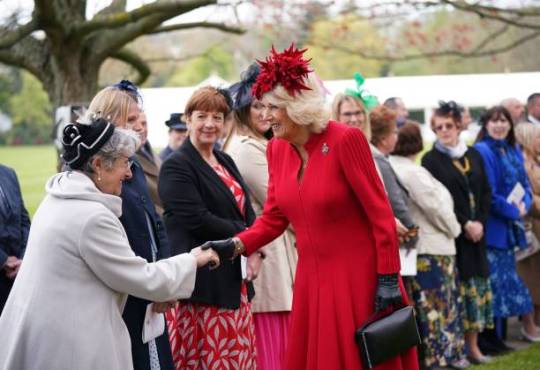
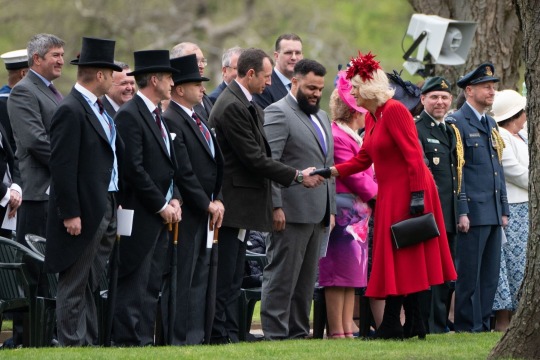

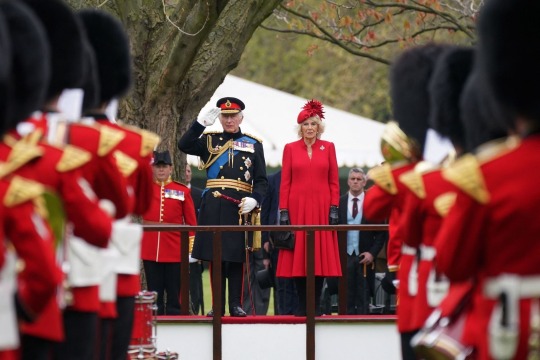
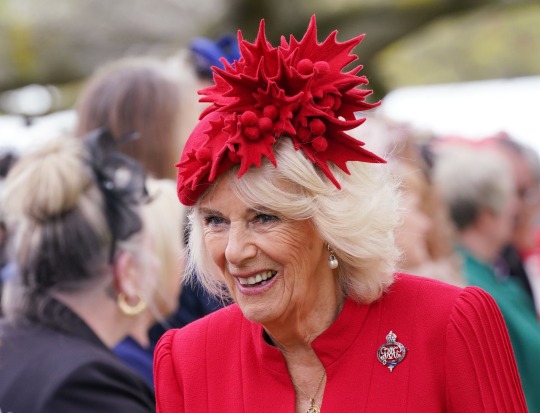
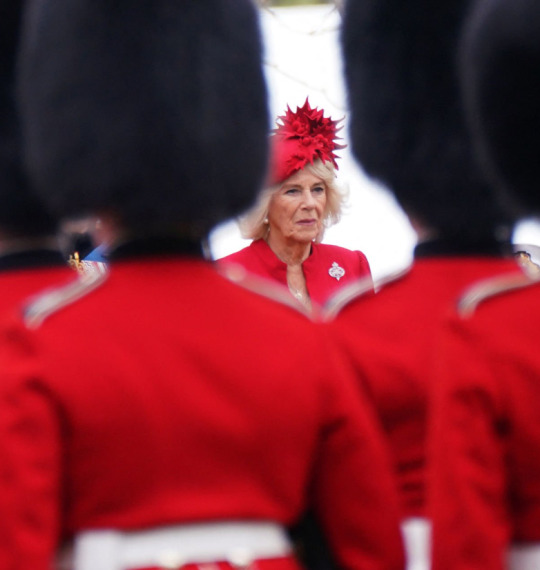
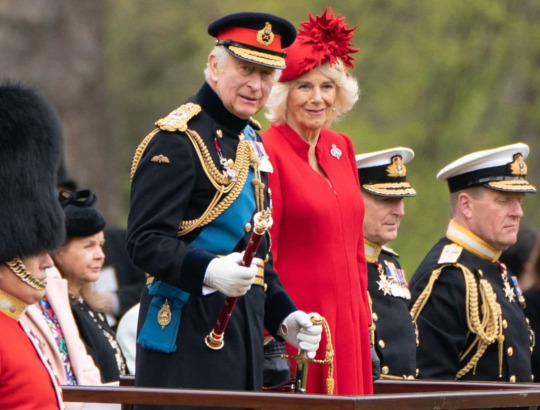
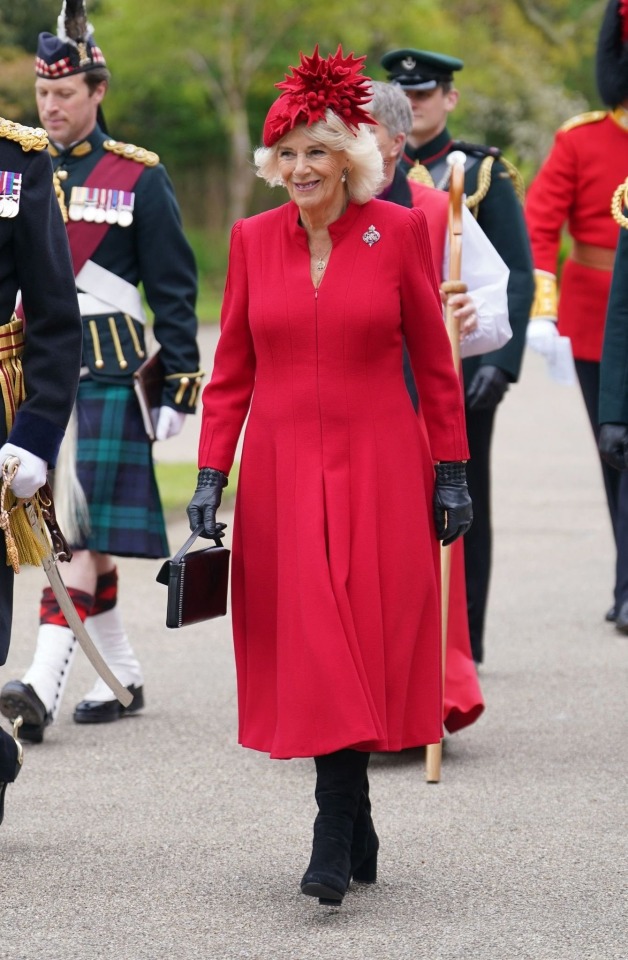
King Charles III and Queen Camilla attend a ceremony to present new Standards and Colours to the Royal Navy, the Life Guards of the Household Cavalry Mounted Regiment, The King's Company of the Grenadier Guards and The King's Colour Squadron of the Royal Air Force at Buckingham Palace, London, 27.04.2023
81 notes
·
View notes
Text
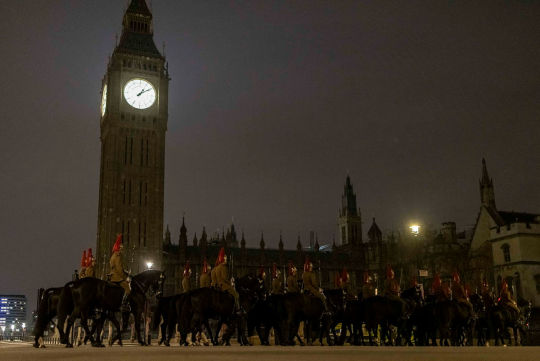
18th April 2023
Very early in the morning...
Members of the Household Cavalry Mounted Regiment, who will form the Sovereign's Escort at the Coronation took part in the first rehearsals for the big day.
44 notes
·
View notes
Text
The artist and the soldier: the unlikely friendship of Lucian Freud and Brigadier Andrew Parker Bowles

The painter makes real to others his innermost feelings about all that he cares for. A secret becomes known to everyone who views the picture through the intensity with which it is felt.
- Lucian Freud
Lucian Freud’s majestic The Brigadier, painted between 2003 and 2004, is a powerful, intimate, portrait of Brigadier Andrew-Parker Bowles, a dashing cavalry officer and ex-husband of Queen Consort Camilla, and thus a venerable member of the British establishment and aristocracy.
Steeped in the traditions of military portrayals, Freud’s painting of a British army brigadier is transformed into a resolutely contemporary painting by his legendary attention to detail and lucid brushstrokes. It evokes the spirit of the grand military portraits that populate art history, yet in Freud’s hands the lucid brushstrokes produce a portrait that captures the contradictions of the modern world in a very contemporary way.
But the portrait also tells a story of a most unlikely friendship struck up by an artist and his subject. They made an unlikely pair: the roguish painter in his eighties, who famously enjoyed a flutter and a fight, and the highly decorated soldier with impeccable royal connections.
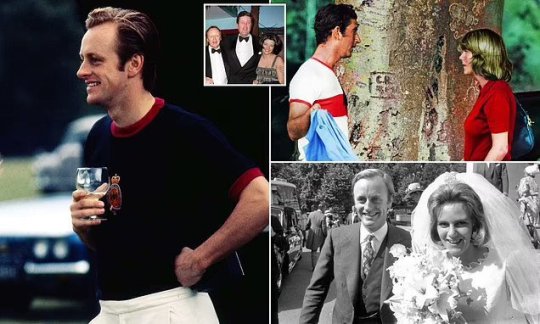
Although Freud died in 2011, Parker Bowles is always ready to share his story of his friendship with the uncompromising and difficult late artist. He most famously tells of one story when, “‘At one stage a group of Americans were taking flash photos, which Lucian hated, so he threw a bread roll at one of them. The man complained,’ recalls Parker Bowles. And how did you react? ‘Well,’ he pauses. ‘I was just a tiny bit embarrassed.’ Luckily, the proprietor was on hand to mediate. ‘He came over and said to the American, “I’m terribly sorry but Mr Freud is allowed to do that.” That was it.’ That always gets a bellyful laugh out of the ex-brigadier Andrew Parker Bowles (APB as he’s often tagged).

If you visit Parker Bowles’ cottage in the Cotswolds, you’ll see many interests bits of memorabilia. The last British Union flag that flew in Rhodesia, where he served, is resting on a radiator. Nestled on a shelf amidst medals and trophies is a small bottle of stitches preserved in brine – wrenched from Parker Bowles’ back after he broke it during the hurdle race at Ascot. In another is a lump of cartilage extracted from his knee and pickled for posterity (the culmination of rugby knocks and jumping out of a plane). All, in their own way, are emblems of the rugged masculinity and swashbuckling adventure he exudes even at 83 years old. One can see why the irascible Lucian Freud liked him.
But in the corner of one room are photographs of his old friend, Lucian Freud. They hang next to a bronze bust of Freud’s head and a framed letter: ‘My dear Andrew, since even your more foolish actions have their reasons – why is it that I haven’t seen you for so long? Can we have a ride, a drink, a jaunt or a fight? Please write. Lucian.’

The pair first met in 1983, when Parker Bowles, then Commanding Officer of the Household Cavalry Mounted Regiment, received a request from Lucian Freud, who wanted to paint a horse. Parker Bowles chose the horse he thought was best at staying still and Lucian painted away. ‘When he finished, he gave the trooper holding the horse a sketch and said, “Don’t just throw it away, if you want to sell it, go to my agent and he’ll buy it off you.”’ With the money, the trooper bought a house. ‘A rather nice start. I got nothing as a result,’ says Parker Bowles in mock dismay. ‘Except I got to know him.’
Before long, a friendship blossomed. Together, they’d go riding, galloping around Hyde Park, Freud’s scruffy suit covered in paint, his white silk scarf billowing in the wind. ‘Freud wouldn’t wear a hard hat. So it would be me chasing after him, trying to slow him down. Him going flat out.’
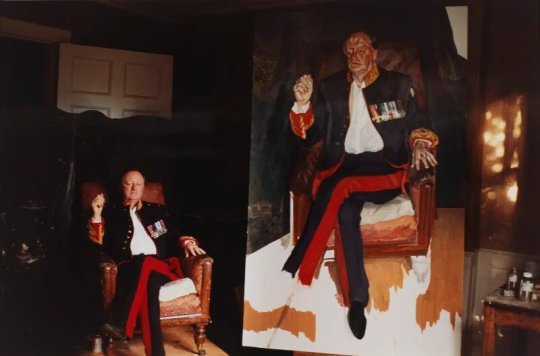
Over the years, they’d visit the National Portrait Gallery at night, which would be opened especially for Freud. They went to Paris for an exhibition and to Ireland to see Freud’s bookmaker, who had accrued more than 20 pictures in lieu of gambling debts. They watched the Ascot races, and ‘as I recall, he lost a million pounds betting.’ Eventually Freud stopped gambling. ‘When I asked why, he said, “Well, now I have enough money.” The joy and fun was being short of money and losing it and having people hammering on his door.’ Those debtors, it was said, included the notorious East End gangsters, the Krays.
And yet, amongst all the liveliness, Freud also found the time to work prolifically. He painted well into his eighties, burning through sittings - a nude mother one morning, her nude daughter in the afternoon. Perhaps it was only inevitable that one day the bell would toll for Andrew Parker-Bowles.
It was 2003. At first APB said no. he said, “Look, I have things to do.”’ He had recently left the army and was putting together a few business prospects. No matter, said Freud: “It will only take a few months. It’s a head and shoulders.”’
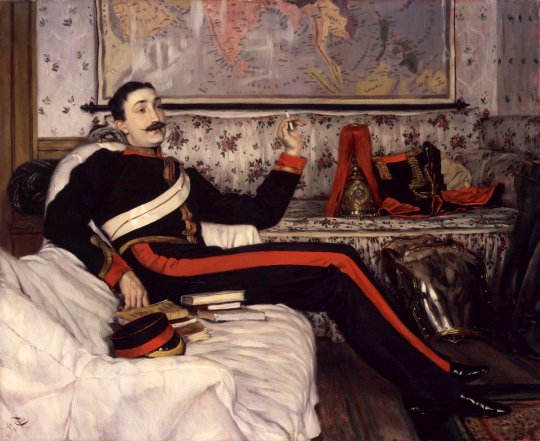
They’d talked about James Jacques Tissot’s glamorous portrait in the National Portrait Gallery of Colonel Fred Burnaby, a moustachioed war hero who served in the same regiment as Parker Bowles. It would be the inspiration.
So APB went back to the Knightsbridge Barracks and borrowed his old uniform. To his surprise, he discovered that it no longer fitted as comfortably. ‘I’d put on a bit of weight, or otherwise it’d shrunk,’ APB would laugh at recalling his embarrassment. ‘The first morning it was so hot, and the uniform was so tight, I undid it. That’s when Freud said, “That’s it, hold it, that’s what we want.”’
The three-month mark came and went, and the picture continued to grow in size. As APB would recall, ‘He kept on adding canvas. My heart sunk. Soon it was seven feet high.’

By his own admission he was a fidgety sitter and Freud was ‘incredibly slow.’ Parker Bowles got by with plenty of Diet Coke and regular breaks. ‘As you can see from the picture I had rather an inane look on my face. You can’t have someone smiling because you can’t hold a smile for 18 months.’
Freud liked to work in silence. ‘Every so often he would come quite close to you.’ He gestures his hand to his nose. ‘Look at you, and go back.’
When Freud wanted to rest, he’d stop and talk. ‘But then he wouldn’t paint. One was torn between wanting him to get on with it and listening to what he had to say about things.’
At one stage Parker Bowles caught a glimpse of the portrait He didn’t like APB seeing what he’d done, but it was such a big picture that APB couldn’t help but look at it, and complained that his friend had been unkind in the likeness of his size. Freud gleefully painted an extra inch of fat on to Parker Bowles’ middle. ‘He did it to shut me up.’

Freud’s tempers were infamous, yet he and Andrew never argued. ‘Discussions yes, arguments no. In his relationships, the minute something went wrong, he’d cut you off and wouldn’t ever speak to you again. Luckily, he didn’t do it to me. But he did with some of the girls he painted.’
Instead, Freud was ‘great company’ and a routine emerged. ‘It would be breakfast at Clarke’s, then we’d go back and I’d climb into my uniform. Even if he was just painting my face, he still wanted me to wear the whole uniform.’ Lunch might be at Clarke’s again and then back to the studio. If it sounds intense, it wasn’t constant: twice weekly for the sittings. ‘Then he’d wheel in the next victim.’

The starriest of these included Jerry Hall and Kate Moss, though perhaps one of Freud’s most talked-about paintings, unveiled in 2001, was of the late Queen Elizabeth II. Many were critical of the royal portrait, which was, even by the most anodyne description, unforgiving. One newspaper called it a ‘travesty’. Parker Bowles is more sanguine about it. He said in one interview, ‘You have to say it’s accurate. I once asked Her Majesty, the Queen what she thought about Mr Freud’s picture and she replied, “Very interesting.” Which is a very clever answer, really.’
And what of his own portrait? Did it require diplomacy? After 18 long months the oil painting was finished and titled The Brigadier. One critic described the painting as ‘insolent’, ‘scathing’ and ‘melancholic’. He went on to describe its subject as looking ‘saddened and wiped out’. Flattering? Admittedly perhaps not, but a masterpiece, said many. Parker Bowles - who divorced Camilla in 1995 - was a fan of the work, and the painting’s naturalism is one of the reasons why it is so popular. Parker Bowles might have bought it. Instead, it was installed in someone else’s house and eventually sold by Christie’s in 2015 for $35m – a record figure.
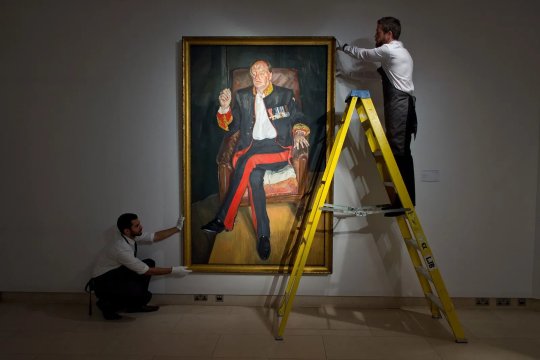
Andrew Parker Bowles has always been stoic about missing on buying his own portrait but he lacked the funds by a country mile on his military pension and other holdings. He conceded that he didn’t fancy the idea of, “a seven-foot picture of myself looking rather red-faced and fat wasn’t my idea of fun”.
youtube
So there’s no Brigadier hanging in the Cotswolds, but a picture of a friendship emerges and endures. Freud lived to be 88. Parker Bowles went to see his friend as he lay dying in the summer of 2011. Three of his daughters were there; Freud had 14 acknowledged children. Parker Bowles went in. He was unconscious and APB held his hand. They went next door with Freud’s assistant David Dawson and their Irish friend Pat Doherty, whom Freud had also painted, and they had dinner and Freud died that night.
Andrew Parker Bowles continues to have fond memories of his most unlikely friendship with one of Britain’s distinguished artists. He said once in a newspaper profile. ‘Freud was a fascinating man. I wouldn’t say he was a particularly kind man, he was often quite cruel. But his whole life was painting, really, right to the end.’
#freud#lucian freud#quote#art#artist#portrait#the brigadier#aesthetics#andrew parker-bowles#parker bowles#soldier#household cavalry#royalty#aristocracy#nobility#establishment#essay
61 notes
·
View notes
Text
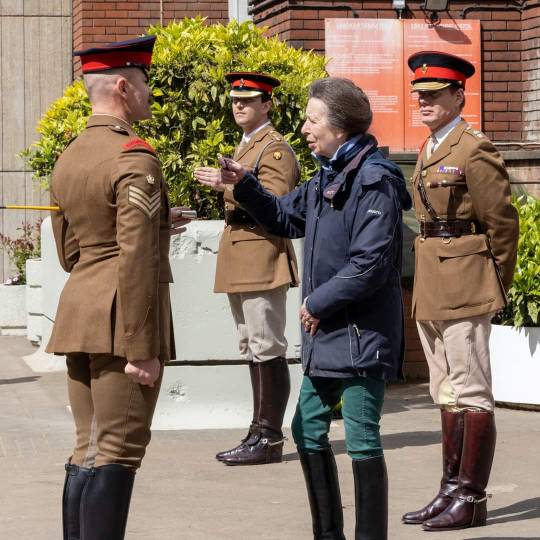

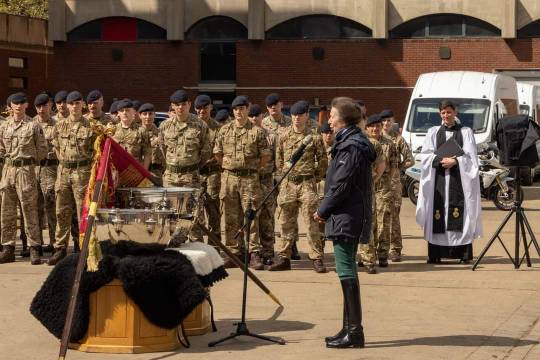
After touring the stables of The Household Cavalry, HRH The Princess Royal awarded the Long Service and Good Conduct medal to Corporal of Horse Hattingh.
Corporal of Horse Hatting joined the Army in 2007. He started his career in the Lifeguards Squadron at the Mounted Regiment. In 2010, He moved to the Armoured Regiment where he would go on to deploy on operations in Afghanistan as well as exercises overseas.
After the presentation, Colonel Anne gave a speech to the Mounted Regiment ahead of tomorrows Coronation.
43 notes
·
View notes
Text
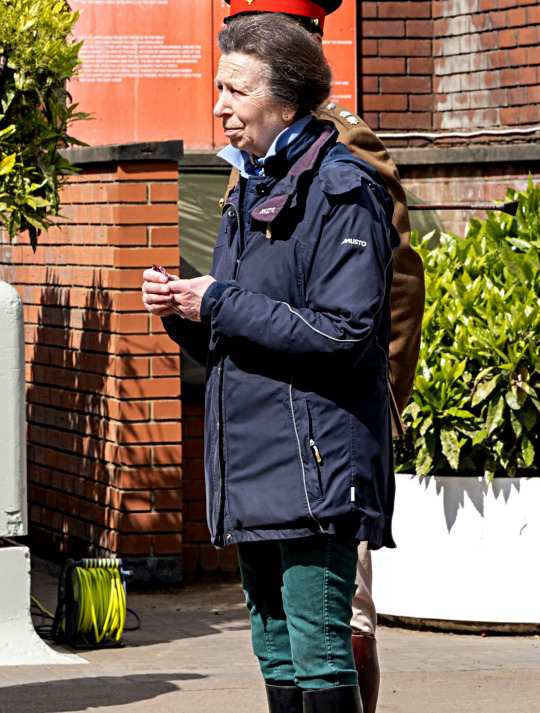
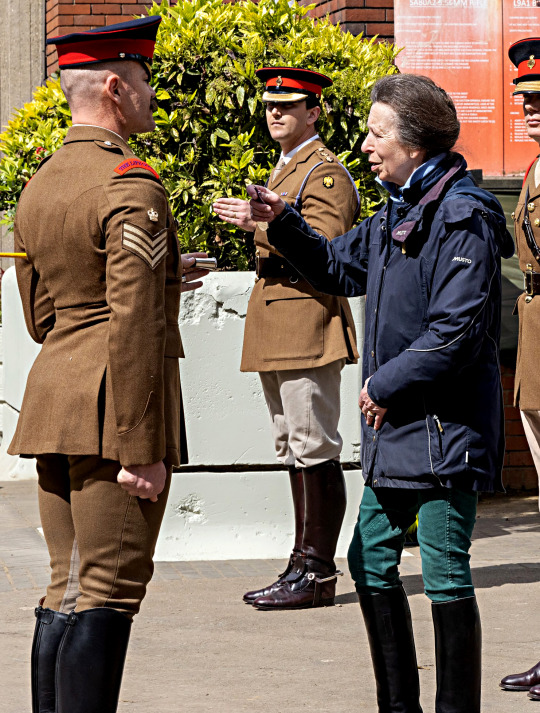
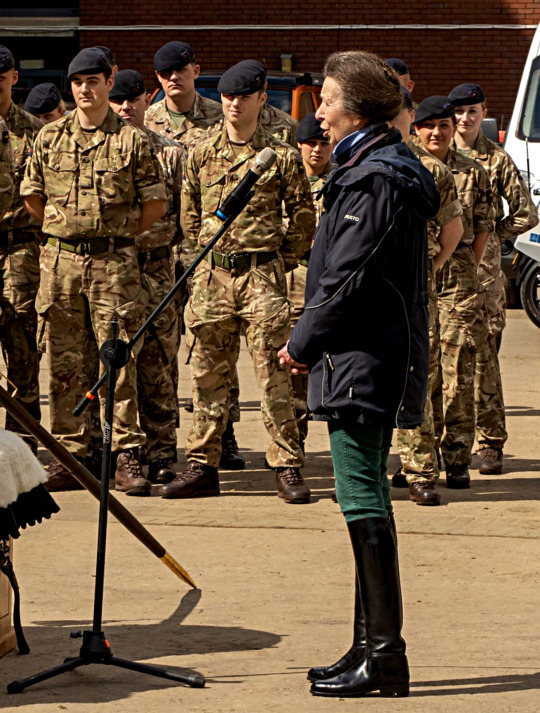
5 May 2023
After touring the stables of The Household Cavalry, HRH The Princess Royal awarded the Long Service and Good Conduct medal to Corporal of Horse Hatting.
Corporal of Horse Hatting joined the Army in 2007. He started his career in the Lifeguards Squadron at the Mounted Regiment. In 2010, He moved to the Armoured Regiment where he would go on to deploy on operations in Afghanistan as well as exercises overseas.
After the presentation, Colonel Anne gave a speech to the Mounted Regiment ahead of tomorrows Coronation.
— The Household Cavalry
29 notes
·
View notes
Text

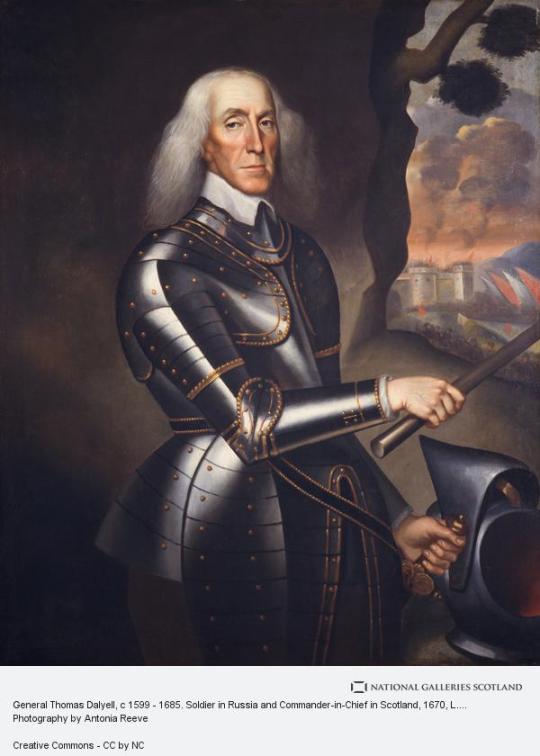

November 25th 1681 General Tam Dalyell raised a regiment to suppress Covenanters which later became the Royal Scots Greys.
Also known as Bluidy Tam, General Dalyell, became notorious for his suppression of the Covenanters at the Battle of Rullion Green, in the Pentland Hills, in 1666. Little more than a thousand Protestant 'rebels' had marched from Dumfries towards Edinburgh, armed only with scythes, pitchforks and staves. Tam is said to have been disgusted with his soldiers after they killed men women and children, and resigned his commission.
Earlier in his life, while fighting for Charles I in the civil war he had been imprisoned after Oliver Cromwell won the Battle of Worcester. He managed to escape from the Tower of London and fled to Russia where he achieved high rank in the army of Tsar Alexei Mikhailovich, father of Peter the Great in Russia and is said to have brought back a rather nasty invention back to Scotland with him, the dreaded thumbscrews. It was his time there that gained him the other unenviable nickname "Muscovite De'il", where he also noted while in Russia that it was much more difficult to spot Russian soldiers than traditional "British Red Coats". Therefore he also brought back the stipulation that the Scots Greys wore grey uniforms as camouflage, which was successfully used against the Covenanters. He had also raised a regiment of infantry in 1666, but no records of the foot regiment exist today.
Another interesting legend about the man is connected with a Marble topped card table that it is said during a particularly fraught card match played between the General and the devil was thrown at Dalyell , but missed and ended going out the window, landing in a nearby pond, a marble table was indeed found when the pond dried up 200 years later. The cards, goblet and spoon, supposedly used in the game are displayed in the house. The General is said to have told the Devil, who threatened to blow down his house and its walls, that "I will build me a turret at every corner to pin down my walls".
In August 1685 Lieutenant-General Tam Dalyell died at his town house just off John Street in the burgh of the Canongate where he lived with his fourth wife Marion Abercrombie. But the story didn't end there.......
Following military tradition his boots were hung in reverse from the saddle of his horse while his martial baton was carried on the top of the coffin. Troopers of the Royal Scots Dragoons, the red-coated Scots Guards and six field guns escorted his funeral procession. Watched by hundreds of citizens, who lined the route, the sombre military procession with muffled drums beating wound its way slowly up the hill through Portsburgh leaving the city by the west gate, now known as West Port.
"Old Tom of Muscovy" as he had been nick named by King Charles II was buried beside his parents in the family vault at Abercorn Church not far from the ancestral home, The Binns. Tam's third son John took his father's cavalry boots back to his home at Lingo in Fife but he was forced to return them to The Binns. Every night when he took them off they awakened the sleeping household as they marched around the house. It was said that if cold water was poured into them, it would quickly come to a boil!!!
Although he was long gone, Tam's legend continues to grow. On pitch black nights the General mounted on a white charger could be seen entering his estate by the Black Lodge situated on the road between Bo' ness and Queensferry. Clattering across the ruined bridge over the Errack Burn, the ghostly horse and rider would gallop up the old road to the Binns.
The third pic is called Scotland Forever and is a depiction of the Scot's Greys leading the charge at the Battle of Waterloo.
7 notes
·
View notes
Text
An excerpt from: As the 'hot equerry' steps down, meet the dashing military hunks the royals can't live without - from 'Major Eye Candy' to the bomb-defusing hero helping Kate back to work after her surgery
Princess Margaret famously fell in love with her father's equerry, Captain Peter Townsend, in a controversial and tumultuous royal romance, while Princess Anne's husband, Vice Admiral Sir Timothy Laurence, started his career as equerry to her mother, Queen Elizabeth II.
Captain Stuart Kaye
Equerry to: Princess Anne
Regiment: The Household Cavalry
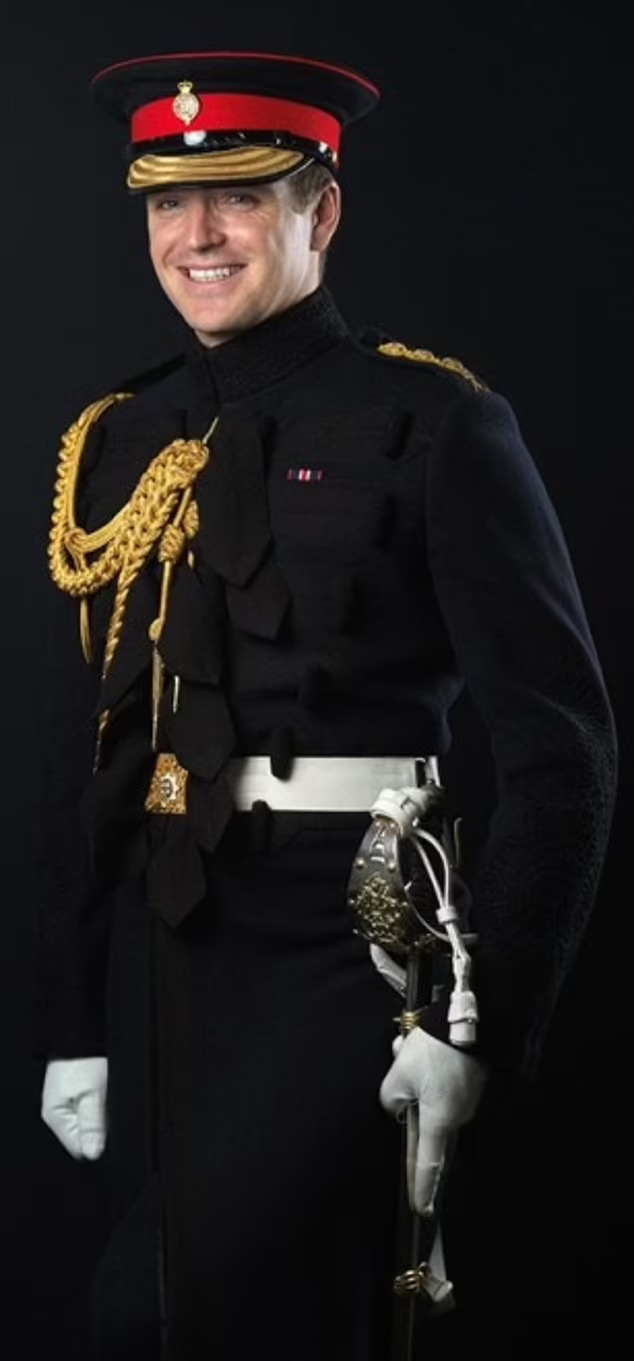
Captain Stuart Kaye was hand-picked by Princess Anne for his professionalism and aptitude in public duties
Captain Stuart Kaye was hand-picked by Princess Anne for his professionalism and aptitude in public duties
Sandhurst-trained Captain Stuart Kaye, equerry to Princess Anne, has drawn more than a few admiring glances over the years – and recently accompanied his royal mistress to Namibia, where she was attending the funeral of the late president.
Now in his early thirties, Captain Kaye attended King's School Bruton in Somerset before studying politics and modern history at Cardiff University. He went on to do a Master's degree at University College London, starting his career as an intern at the Association of British Insurers, before joining the military in 2018.
The dashing officer has served as Squadron Second-in-Command at Bulford Barracks and Mounted Troop Leader for The Household Cavalry, before being appointed to his equerry role in September 2022.
Princess Anne hand-picked him for his professionalism and aptitude in public duties – though royal watchers have pointed out that he doesn't look half-bad in his ceremonial uniform, complete with silver-plumed helmet, gold tassels and sword, either.
#move aside mjr johnny thompson. tim is the og hot equerry 😌#princess anne#princess royal#tim laurence#timothy laurence#captain stuart kaye#hot equerries
33 notes
·
View notes
Photo

Members of the Household Cavalry Mounted Regiment prepare for a night time rehearsal for the coronation of King Charles III at Hyde Park Barracks on April 17. Dan Kitwood—Getty Images
Thank you🐼
23 notes
·
View notes
Text
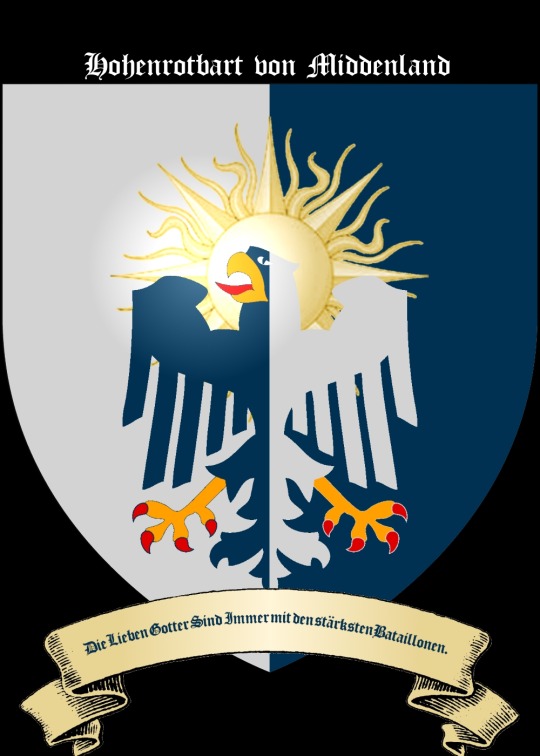

My latest retouch of the second illustration of some "Schwarze Reiter” that I have officially designed to feature the faction iconography of “Hohenrotbart Des Königreich Middenland" or "House Rotbart of The Kingdom of Middenland," one of the most iconic and essential factions of my "homebrew" low-fantasy setting. Both this artwork and it's associated faction iconography were officially designed for a "homebrew" low-fantasy setting of my original conception with technology and material culture roughly equivalent to European History during the compounded advents of The Italian Renaissance, The Protestant Reformation, and The Discovery of America. Where formations of heavily armoured and mounted, aristocratic and noble knights in either suits of full plate armour or heavy coats of chainmail fight alongside professional regiments of pikemen and matchlock musketeers. Where medieval-style stone castles are gradually being outsourced in favour of lavish country estates and devoted military fortifications, or “bastions,” due to the technological advancements being made in gunpowder-based, siege artillery. And where fledgling nation-states in the form of both kingdoms and empires look beyond the great oceans and the frontiers of “The Known World” in search of exotic riches and territory.
In context to the canon lore of my "homebrew" low-fantasy setting, “Hohenrotbart Des Königreich Middenland" or "House Rotbart of The Kingdom of Middenland" is loosely inspired by Medieval and Renaissance Prussia under The Theocracy of The Teutonic Knights as well as Ducal Prussia during the 16th and 17th centuries. “Friedrich I, Der erster und herrschend König von Middenland und Der Gründungschef von Hohenrotbart," with his legislative decree to formally convert to “The Luxembourgian Reformation” on behalf of both his dynastic household and his hereditary subjects being highly analogous to "Albrecht von Preußen's" or "Albert von Brandenburg-Ansbach's" formal secularization of “The Monastic State of The Teutonic Knights” or “Der Deutschordenstaat” to The Lutheran, East Prussian Duchy as it's last effective grandmaster and it's first duke in the early 16th century. Designated in my "homebrew" low-fantasy setting as “Shwarze Reiter” or “Black Riders,” the constituent “Bruderschaften” or “chapters” of “Die Schwarzen Reiter” as the elite, pseudo-monastic, martial fraternities of aristocratic and noble heavy cavalry paying direct homage and military service to the legal persons of "Hohenrotbart Des Königreich Middenland” as opposed to the feudal, private interests of the aristocratic and noble “great houses” of “junker” princeps and magnates. Each “Brüderschaft” or “chapter” is led under the personal command and the direct supervision by “Ein Großmeister” or “a grandmaster,” who are each personally and individually appointed for life from “legitimate issues” or “dynastic scions” of the aristocratic and noble "great houses" of “junker” princeps and magnates to serve the royal, state interests of “Hohenrotbart Des Königreich Middenland” over those of any princely “great house” of “junker” aristocracy and nobility. “Die Könige von Middenland” as the hereditary, dynastic patriarchs of "Hohenrotbart" are, by tradition, the more-or-less hereditary holders of the appointed office of “Der Hochmeister Der Schwarzen Reiter” or “The Supreme Grandmaster of All Schwarzen Reiter” as a tradition meant to "engender" or otherwise "rationalize" their position of military authority as the lawful, legitimate, and undisputed commanders-in-chief of all constituent “Bruderschaften” or "chapters" of "Die Schwarzen Reiter" in Das Königreich Middenland. To reinforce both the professional loyalties and the direct homage of the constituent "Bruderschaften" of "Der Schwarzen Reiter" to the persons of “Hohenrotbart Des Königreich Middenland” as the traditional and more-or-less hereditary holders of the appointed office of “Der Hochmeister Der Schwarzen Reiter.” Both the personal livelihoods and the unit upkeep costs of the constituent “Brüderschaften” or "chapters" of "Der Schwarzen Reiter" were funded through a combination of the quarterly land tax generated by “the demesne” or “the crownlands” under the direct administration of "Hohenrotbart Des Königreich Middenland" and their civil administrators, through any tariffs imposed on the commerce and the industry of Der König von Middenland’s charter companies and the local trade guilds, as well as through any tithes and benefices generated by the religious services of, donations to, and property owned by The Conservative Church of The New Gods in joint partnership with "Hohenrotbart Des Königreich Middenland" over the sovereign and legitimate rulership, the state administration, and the systematic, mass conversion of the autochthonous, apostate Albic tribes religiously subscribed to the druidic, cult worship of “Erdøk” or ”The Great Forest” geographically situated directly beyond the easternmost fronters of “Das Selbst Kaiserreich Der Menschheit” or “The Empire of Mankind Proper.”
Alongside "Hohenbiermann Der Markgrafschaft Brannenborg," "Hohenrotbart Des Königreich Middenland" collectively forms "Die Sudkreuzritterstaaten," "Die Teutogenstaaten," or "Die Sudentscheidenstaaten." Essentially a "Teutogen" or "Southern Austere" cultural and linguistic bloc born of the subsequent and complimentary events of "The Southern Crusades" and "The Sudsiedlung." "The Southern Crusades" essentially being the religious warfare and the territorial conquests formally preached and prosecuted against the autochthonous, apostate, Albic tribes religiously subscribed to the druidic, cult worship of "Erdøk," "The Great Forest," or "The Great Bastion" geographically situated directly beyond the easternmost frontiers of "Des Zweiten Kaiserreich der Menschheit" or "The Empire of Mankind Secundus." While "The Sudsiedlung" generally denotes the gradual and effective resettlement of culturally and ethnically "Austere" or "Northern Imperial" settlers and immigrants hailing from "Das Selbst Kaiserreich der Menschheit" or "The Empire of Mankind Proper" alongside the synonymous, systematic, and complimentary mass conversion of the indigenous, apostate, Albic tribes back into the fold of The Conservative Church of The New Gods officially seated within The Holy Sept of Romulus and their thorough and effective assimilation into the "Austere" or "Northern Imperial" culture and language of their feudal and ecclesiastical lords and masters using the religious services and the church schools officially sponsored by a culturally and ethnically "Austere" or "Northern Imperial" Conservative Clergy with their traditional monopolies over knowledge, learning, and education in general. The cultural assimilation of the autochthonous, apostate, Albic tribes of Des Königreich Middenland and Der Markgrafschaft Brannenborg being a synonymous and complimentary necessity with their systematic, mass conversion back into the fold of The Conservative Church of The New Gods, as there were essentially no literate and formally educated indigenous Albic Clergy who could effectively and efficiently preach and proselytize the Conservative Liturgy of The Holy Canons of The New Gods to the pious masses in "Die Sudkreuzritterstaaten, "Die Teutogenstaaten," or "Die Sudentscheidenstaaten." With any autochthonous, apostate, Albic tribes who had both violently resisted and openly protested against both the legislative marginalization of their religious liberties and their synonymous, systematic, and complimentary mass conversion and cultural assimilation into the culture, religion, and language of their "Austere" or "Northern Imperial" feudal and ecclesiastical overlords facing mass genocide at the hands of the fledgling, yet brutally efficient and effective professional armies paying direct homage and military service to "Hohenrotbart Des Königreich Middenland" and "Hohenbiermann Der Markgrafscaft Brannenborg," or those of the feudal, aristocratic levies of knightly retinues and pike-and-shotte infantry regiments paying direct homage and military service to the aristocratic and noble "great houses" of "junker" princeps and magnates in either Das Königreich Middenland or Die Markgrafschaft Brannenborg. "Hohenrotbart Des Königreich Middenland," in particular, was born out of Bishop-Prince Friedrich Albrecht Von Rotbart's "Midlands Crusade" formally preached and prosecuted on behalf of "Archpatriarch Vexillarius IV, 299th and Reigning Bishop of Romulus and Current Head of The Conservative Church of The New Gods" against the autochthonous, apostate, Albic tribes geographically situated directly beyond the southernmost frontiers of "Des Zweiten Kaiserreich der Menschheit" or "The Empire of Mankind Secundus." With "The Midlands Crusade" finally concluding, in stunning and overwhelming triumph, in favour of Bishop-Prince Friedrich Albrecht Von Rotbart and the conquering, crusading host of "The Midlands Crusade" at the climactic "Battle of The Godswoods."
With the stunning and final conclusion of "The Midlands Crusade" formally and officially preached and prosecuted against the indigenous, apostate, Albic tribes religiously subscribed to the druidic, cult worship of "Erdøk" or "The Great Forest" by Friedrich I's far more prestigious, prolific, and illustrious older brother Friedrich Albrecht Von Rotbart, "Bishop-Prince of Elchingen," "ecclesiastical, invested Kurfürst Des Selbst Kaiserreich der Menschheit," and above all "Archpatriarchal Legate" or "Pontifical Representative" to "Vexillarius IV, 299th and Reigning Bishop of Romulus and Current Head of The Conservative Church of The New Gods" for "The Midlands Crusade" with the stunning and overwhelming victory for the sanctioned host of The Conservative Church of The New Gods at the climactic "Battle of The Godswoods." "The Godswoods" as the holiest shrine and the sacred grove to the autochthonous, apostate, Albic tribes geographically situated directly beyond the southernmost frontiers of "Das Selbst Kaiserreich der Menschheit" or "The Empire of Mankind Proper" was subsequently and consequently desecrated and demolished by the conquering, crusading knights of "The Midlands Crusade." With it's constituent lands being formally consecrated as the site of the new basilica town of Marienburg, where Friedrich Albrecht Von Rotbart would be invested, with The Bishop of Romulus' explicit blessing, the awesome and prestigious ecclesiastical office of "Bishop-Patriarch of Marienburg" in order to facilitate the systematic, mass conversion of the indigenous, apostate, Albic tribes back into the fold of The Conservative Church of The New Gods officially seated within The Holy Sept of Romulus. By sheer virtue of his fraternal ties to both "The Archpatriarchal Legate" or "The Pontifical Representative" to Vexillarius IV for "The Midlands Crusade" as well as the seminal and founding "Bishop-Patriarch of Marienburg," Friedrich Von Rotbart was naturally prioritized over all other prospective candidates for his formal coronation and anointment as "Friedrich I, Der ester und herrschend König von Middenland und Der Gründungschef von Hohenrotbart" as The Former Kingdom of The Midland's first hereditary monarch and dynastic household since the extinction of the legitimate, male bloodline of The Late House Bartholemew almost an entire century ago. Using the awesome power, prestige, and authority inherently tied to the venerable and prestigious ecclesiastical office of Bishop-Patriarch of Marienburg, Friedrich Albrecht Von Rotbart would use his ecclesiastical office within The Conservative Church of The New Gods to leverage the unanimous political and religious support of all the high ranking ecclesiastical and monastic offices of Conservative Clergy within Das Königreich Middenland.
Although having won the unanimous religious support and the political backing of the ecclesiastical and the monastic clergy of The Conservative Church of The New Gods in Das Königreich Middenland. Friedrich I's coronation as "Der ester und herrschend König von Middenland und Der Gründungschef von Hohenrotbart" was generally and initially received with both icy anticipation and subtle dread, in equal measure, by the newly established aristocratic and noble "great houses" of "junker" princeps and magnates who formed from the cream, core, and bulk of the conquering, crusading knights originally involved in Friedrich Albrecht Von Rotbart's "Midlands Crusade." Many of whom personally felt that they were better suited towards, or otherwise felt that they were more entitled to the formal and official coronation for the hereditary, dynastic title of "Der erster und herrschend König von Middenland" due to the equal degree of suspicion and skepticism they generally held in regards to Friedrich Von Rotbart in most part due to his minor aristocratic and noble birth within the "Austere" or "Northern Imperial" cultural and linguistic hemisphere of "Des Zweiten Kaiserreich der Menschheit" or "The Empire of Mankind Secundus," as well as his professional background as a mercenary captain to pike-and-shotte infantry, as opposed to aristocratic and noble heavy cavalry due to the historical precedence of the militaristic traditions and ideology of professional chivalry. To placate the residual and looming suspicion, skepticism, and subtle dread initially and generally expressed by Das Königreich Middenland's greater and lesser dynastic houses of "junker" aristocrats and nobles, while also further "entrenching" or otherwise "reinforcing" their feudal homage and their hereditary, dynastic loyalties to "Hohenrotbart Des Königreich Middenland." Friedrich I, with Bishop-Patriarch Friedrich Albrecht Von Rotbart's explicit blessing, would award hereditary, dynastic enfeoffment over Das Königreich Middenland's most arable and lucrative lands, titles, and estates which had not been previously claimed as the legal property of The Conservative Church of The New Gods to the greater and lesser dynastic houses of "junker" aristocrats and nobles. Later on into the decades of his long, prolific, and illustrious reign as "Der erster und herrschend König von Middenland und Der Gründungschef von Hohenrotbart," Friedrich I would decree state legislation to award Das Königreich Middenland's greater and lesser dynastic houses of "junker" aristocrats and nobles the exclusive, feudal privilege for state appointments as judges and magistrates for the new, secular, "royal" law courts officially established by Friedrich I since the aftermath of "The Midlands Crusade" with his formal coronation as "Der ester und herrschend König von Middenland und Der Gründungschef von Hohenrotbart." The voluminous bodies of secular law codes, traditions, and customs governing the provincial jurisdiction of Friedrich I's "royal" law courts essentially being derivative works of those of "Die Freie Reichsstädte" or "The Imperial Free Cities" within the "Austere" or "Northern Imperial" cultural and linguistic hemisphere of "Des Zweiten Kaiserreich der Menschheit" or "The Empire of Mankind Secundus." With the exception of the provincial jurisdiction of the episcopal diocese of The Archbishopric of Marienburg, which was governed directly by the canon law courts answerable only to The Archpatriarch officially seated within The Holy Sept of Romulus.
In direct cooperation and in joint partnership with his far more prestigious, prolific, and illustrious older brother Bishop-Patriarch Friedrich Albrecht Von Rotbart. "Friedrich I, Der erster und herrschend König von Middenland und Der Gründungschef von Hohenrotbart" worked in direct cooperation and in joint partnership with both the ecclesiastical and the monastic clergy of The Conservative Church of The New Gods over the sovereign and legitimate rulership, the state administration, and the systematic, mass conversion of Das Königreich Middenland's autochthonous, apostate, Albic tribes back into the fold of The Conservative Church of The New Gods officially seated within The Holy Sept of Romulus. With any indigenous, Albic tribes who had both violently resisted and openly protested against the legislative marginalization of their religious liberties in order to encourage their systematic, mass conversion back into the fold of The Conservative Church of The New Gods facing mass genocide at the hands of either the fledgling, yet brutally efficient and effective professional army paying direct homage and military service to "Hohenrotbart Des Königreich Middenland," or those of the feudal, aristocratic levies of knightly retinues and pike-and-shotte infantry regiments paying direct homage and military service to Das Königreich Middenland's aristocratic and noble "great houses" of "junker" princeps and magnates. The systematic, mass conversion efforts to bring the autochthonous, apostate, Albic tribes back into the fold of The Conservative Church of The New Gods was facilitated exclusively by a culturally and ethnically "Austere" or "Northern Imperial" Conservative Clergy, who had maintained their traditional monopoly over knowledge, learning, and education in general. As there were no literate or formally educated "autochthonous" or "indigenous" Albic Clergy who could effectively and efficiently preach and proselytize the Conservative Liturgy of The Holy Canons of The New Gods in Das Königreich Middenland, the systematic, mass conversion of Das Königreich Middenland's indigenous, apostate Albic tribes came with their synonymous, complimentary, and thorough cultural assimilation into the culture and language of their culturally and ethnically "Austere" or "Northern Imperial" feudal and ecclesiastical lords and masters using the religious services and the church schools officially sponsored by a culturally and ethnically "Austere" or "Northern Imperial" Conservative Clergy.
In order to "revitalize" or otherwise "encourage" the growth of Das Königreich Middenland's internal economy, industrial base, and cultural and scholastic activity. Friedrich I's first and most enduring policy as "Der ester und herrschend König von Middenland und Der Gründungschef von Hohenrotbart" was to encourage both the mass immigration and the thorough and effective resettlement of skilled, educated, and moneyed commoners hailing from his native "Austere" or "Northern Imperial" cultural and linguistic hemisphere within "Das Selbst Kaiserreich der Menschheit" or "The Empire of Mankind Proper." Using the allure and the promise to permanently resettle, in free hold, within the newly established castles and fortified cities of Das Königreich Middenland, as well as the most lucrative and arable rural estates of their attached countryside. Friedrich I hopes to stimulate the growth of both the rising class of urban "burghers" or "bourgeoisie, merchants, professionals, and artisans," as well as the rising class of rural "kollmers" or "country gentlemen." In order to relieve the societal tension caused by the cultural and religious differences between the more-than-significant influx of culturally "Austere" or "Northern Imperial" settlers and immigrants with the indigenous, apostate Albic tribes. Friedrich I as "Der ester und herrschend König von Middenland und Der Gründungschef von Hohenrotbart," in direct partnership with the ecclesiastical clergy of The Conservative Church of The New Gods in Das Königreich Middenland, officially decreed state legislation to offer church-sponsored dowries to any autochthonous Albic families who had both openly and formally converted back into the fold of The Conservative Church of The New Gods in return for marrying off their daughters to any male settlers and immigrants hailing from the "Austere" or "Northern Imperial" cultural and linguistic hemisphere of "Des Zweiten Kaiserreich der Menschheit" or "The Empire of Mankind Secundus." By officially endorsing both a political and a religious campaign to encourage intermarriage between the daughters of any indigenous Albic families who had both openly and formally converted back into the fold of The Conservative Church of The New Gods with male settlers and immigrants hailing from the "Austere" or "Northern Imperial" cultural and linguistic hemisphere of "Des Zweiten Kaiserreich der Menschheit" or "The Empire of Mankind Secundus" using dowries officially sponsored by the ecclesiastical clergy of The Conservative Church of The New Gods in Das Königreich Middenland. Friedrich I hopes to "stimulate" or otherwise "encourage" the rate and the efficiency of the systematic, mass conversion of Das Königreich Middenland's indigenous, apostate, Albic tribes while also placating any political and social instability agitated by the cultural and the religious friction between the more-than-significant influx of "Austere" or "Northern Imperial" settlers and immigrants with the Albic natives.
With the untimely passing away of Bishop-Patriarch Friedrich Albrecht Von Rotbart as Friedrich I's far more prestigious, prolific, and illustrious older brother, "The Archpatriarchal Legate" or "The Pontifical Representative" to Vexillarius IV for "The Midlands Crusade," and the seminal and founding "Bishop-Patriarch of Marienburg" formally invested during the stunning conclusion and aftermath of "The Midlands Crusade" with the official consecration of the site of the basilica town of Marienburg over the lands of the former "Godswoods" as the holiest shrine and the sacred grove of the autochthonous, apostate, Albic tribes of "The Former Kingdom of The Midlands" since before it's untimely and final collapse with the extinction of the legitimate, male bloodline of "The Late House Bartholemew" and the subsequent and consequent political feuding and warring between The Former Kingdom of The Midlands' aristocratic and noble "great houses" of feudal princeps and magnates over the issue of legitimate succession to the extinct, legitimate male bloodline of The Late House Bartholemew. The venerable and ailing Archpatriarch Vexillarius IV as "The 299th and Reigning Bishop of Romulus and The Current Head of The Conservative Church of The New Gods" formally and officially invested in, with his explicit blessing, "Wolfgang Amadeus Von Holswig-Schlestien, Bishop-Prince of Griffenheim and ecclesiastical, invested, Kurfürst Des Selbst Kaiserreich Der Menschheit" as the lawful and legitimate successor to the late Friedrich Albrecht Von Rotbart for the venerable and prestigious ecclesiastical office of "Bishop-Patriarch of Marienburg." Unlike Bishop-Patriarch Friedrich Albrecht Von Rotbart as his immediate predecessor and the seminal and founding Bishop-Patriarch of Marienburg, this new Bishop-Patriarch of Marienburg was particularly hellbent on both maximizing and prioritizing the spiritual, cultural, and moral power, authority, and influence of The Conservative Church of The New Gods formally seated within The Holy Sept of Romulus as the historic capital, civilizational kernel, and titular namesake of The Cosmopolitan, Classical Romulan Republic and "The Empire of Mankind Primus" at the expense of marginalizing the secular, worldly, and temporal power, authority, and influence of "Hohenrotbart Des Königreich Middenland" to a purely nominal level, in order to improve the rate and the efficiency of the systematic, mass conversion of Das Königreich Middenland's autochthonous, apostate Albic tribes religiously subscribed to the druidic, cult worship of "Erdøk" or "The Great Forest" geographically situated directly beyond the easternmost frontiers of "Das Zweiten Kaiserreich Der Menschheit" or "The Empire of Mankind Secundus," which he deemed as being facilitated "reluctantly" or otherwise "inadequately." Stating at one point during his brief and untimely tenure as The Second Bishop-Patriarch of Marienburg that "The Midlands Crusade was formally and officially preached and prosecuted against the autochthonous, apostate, Albic tribes in the name of The Canon Pantheon of The New Gods, not in the name of the selfish and conceited ambitions of prospective monarchs and aristocrats. And it was through their sheer grace and divinity that The Midlands Crusade had finally concluded, in stunning and overwhelming triumph, in favour of the sanctioned host of The Conservative Church."
"Friedrich I, Der erster und herrschend König von Middenland und Der Gründungschef von Hohenrotbart," in direct response to this seemingly existential threat to his sovereign and legitimate rule posed by this new Bishop-Patriarch of Marienburg and his clerical and lay administration, formally decreed state legislation as "Der erster und herrschend König von Middenland und Der Gründungschef von Hohenrotbart" to officially convert to "The Luxembourgian Reformation" to the religious establishment of, and the institutions of organized religion within The Conservative Church of The New Gods officially seated within The Holy Sept of Romulus as the historic capital, the civilizational kernel, and the titular namesake of both The Cosmopolitan, Classical Romulan Republic and "The Empire of Mankind Primus" during "The Civilized World's" historic epoch of "Classical Antiquity" on behalf of both his dynastic household and his hereditary subjects. Karl Von Luxembourg essentially being a learned church doctor of theology at "Die Universität Wörtzburch" in "Das Herzogtum Solingen," a prestigious graduate of "The Imperial Academy" at "Nymphenburg," and the official head and former heir apparent to "Hohenluxembourg Des Königreich Schönbrunn," the only hereditary monarchy within "Das Selbst Kaiserreich der Menshheit" or "The Empire of Mankind Proper" who is best known for his written thesis openly condemning the corruption, the abuses, and the worldly excesses of both the ecclesiastical and the monastic clergy of The Conservative Church of The New Gods and the appeal for a general, sweeping, and universal theological reformation of the religious establishment of, and the institutions of organized religion within The Conservative Church of The New Gods officially seated within The Holy Sept of Romulus. In the process of enacting his legislative decree to become the first hereditary, dynastic ruler in both the recorded histories and the geographic enormity of The Known World to officially convert to Karl Von Luxembourg's general, sweeping, and universal theological reformation to The Conservative Church of The New Gods. Friedrich I would subsequently, consequently, and formally "assume supreme authority over matters of religion” as “The First Supreme Head of The Reformed Church of The New Gods in Das Königreich Middenland," thus endowing himself with state investiture over new bishops and abbots for "The Reformed Church of The New Gods in Das Königreich Middenland." Including state investiture over the venerable and prestigious ecclesiastical office of Bishop-Patriarch of Marienburg since the historic consecration and founding of the basilica town of Marienburg over the site of the former "Godswoods" in the aftermath of Friedrich Albrecht Von Rotbart's "Midlands Crusade," with his formal investiture as the seminal and founding "Bishop-Patriarch of Marienburg" charged with the systematic, mass conversion of the indigenous, apostate, Albic tribes religiously subscribed to the druidic, cult worship of "Erdøk" or "The Great Forest." Friedrich I's formal assumption of supreme authority over matters of religion through his legislative decree to officially convert to "The Luxembourgian Reformation" on behalf of both his dynastic household and his hereditary subjects would naturally culminate in the systematic persecution, the legislative marginalization, and the confiscation of the lands, estates, and treasuries of any ecclesiastical and monastic clergy of The Conservative Church of The New Gods who had both openly and stubbornly refused to submit before, and openly protested against Friedrich I's formal renunciation of his spiritual, cultural, and moral ties of fealty to “The Archpatriarchs” or “The Bishops of Romulus” as “The Anointed, Acolytic, and Universal Heads of The Conservative Church of The New Gods.”
Friedrich I's first official policy as "The First Supreme Head of The Reformed Church of The New Gods in Das Königreich Middenland" was to decriminalize both the vernacular translations and the private ownership of "The Holy Canons of The New Gods" in direct accordance with Karl Von Luxembourg's theological tenets of "sola scriptura" or "salvation by scripture alone," and "sola fide" or "salvation by faith alone," which had always been traditionally codified in "Classical Cosmopolitan" or "Ecclesiastical Cosmopolitan" as the liturgical language of The Conservative Church of The New Gods since the original composition, codification, and canonization of the most widely attested and popular oral mythologies of The Cosmopolitan and The Mycenean Pantheons into the canon theology of The Faith of The New Gods traditionally attributed to the theological reforms officially decreed under the reign of The Cosmopolitan, Classical Romulan Imperator of Mankind "Cassadorian the Great." While both the private ownership and the strict interpretation of The Holy Canons of The New Gods had remained the exclusive, legal reserve of the ecclesiastical and the monastic clergy of The Conservative Church of The New Gods since it's original institutionalization under The Cosmopolitan, Classical Romulan Imperator of Mankind "Demetrius Superbus" as an "administrative organ" or an "administrative body" within the civil magistracy of The Cosmopolitan, Classical Romulan "Empire of Mankind Primus," as well as the exclusive, feudal privilege of the hereditary, dynastic, greater and lesser houses of feudal aristocracy and nobility as both the "traditional" and the "preferential" source for aspiring and prospective clergymen. With Friedrich I's legislative decree to decriminalize both the vernacular translations and the private ownership of The Holy Canons of The New Gods opening both it's reading and it's strict interpretation to all social classes outside the ecclesiastical and the monastic clergy of The Reformed Church of The New Gods in Das Königreich Middenland as well as the greater and lesser dynastic houses of "junker" aristocracy and nobility.
In order to effectively "bolster" or otherwise "reinforce" his legislative decree to open both the private ownership and the strict interpretation of the vernacular translations of The Holy Canons of The New Gods to all social classes outside the ecclesiastical and monastic clergy and the feudal aristocracy and nobility. Friedrich I had actively campaigned to proliferate both the spread and the growth of mass literacy within Das Königreich Middenland using the religious support and the political backing of any professional printers, missionaries, and church schools personally sympathetic to Karl Von Luxembourg and his general, sweeping, and universal reformation to the religious establishment of, and institutions of organized religion within The Conservative Church of The New Gods officially seated within The Holy Sept of Romulus as the historic capital, civilizational kernel, and titular namesake of The Cosmopolitan, Classical Romulan Republic and "The Empire of Mankind Primus." With Friedrich I's formal issuance of the deed of foundation for "The Collegium Fridericium" or "Die Universität Königsberg" serving as both the earliest and the greatest centre for the ideological proliferation of Karl Von Luxembourg's general, sweeping, and universal theological reformation of The Conservative Church of The New Gods, as well as a religious, material, and intellectual cultural monument quite literally "set in stone" devoted in homage to his enduring legacy and infamy as the first hereditary, dynastic ruler in both the recorded histories and the geographic enormity of "The Known World" to formally renounce his spiritual, cultural, and moral ties of fealty to The Holy Sept in Romulus, and in the process formally assuming supreme authority over matters of religion within his sovereign realm as "The First Supreme Head of The Reformed Church of The New Gods in Das Königreich Middenland." With "The Collegium Fridericium" or "Die Universität Königsberg" essentially serving as a mighty bastion and stronghold of religious and intellectual cultural education explicitly founded with the intent of producing prospective bishops and abbots formally schooled and educated in the intellectual framework and methodology of renaissance humanism most popular within the scholastic and academic communities and circles native to the "Frivolous" or "Southern Imperial" states of "L'Impero dell'Umanità Secundo" or "The Empire of Mankind Secundus" and charged with the clerical maintenance and administration of religious orthodoxy within "The Reformed Church of The New Gods in Das Königreich Middenland," as well as literate and formally educated missionaries and preachers charged with the mission of preaching and proselytizing the theological reforms of Karl Von Luxembourg throughout and beyond the established frontiers of Das Königreich Middenland.
#coats of arms#heraldry#shields#medieval#renaissance#chivalry#knights#plate armour#chainmail#gilding#black armour#blackened plate#swords#fantasy#fantasy world#graphic design#art#Friedrich I#Friedrich Albrecht Von Rotbart#Chloe Von Rotbart
2 notes
·
View notes
Note
When does the engagement start tomorrow?
1.15pm: People’s Procession departs Edinburgh Castle Esplanade.
1.30pm: People’s Procession arrives at St Giles’ Cathedral.
1.40pm: The Honours of Scotland leave Edinburgh Castle Esplanade under military escort.
1.40pm: Military pipe and drums bands and the Household Cavalry Mounted Regiment move from the Palace of Holyroodhouse to West Parliament Square.
1.50pm: The Honours of Scotland arrive at West Parliament Square by vehicle.
2.05pm: Royal Procession leaves the Palace of Holyroodhouse.
2.10pm: Royal Procession arrives at St Giles’ Cathedral.
2.15pm: National Service of Thanksgiving and Dedication begins.
3.15pm: Service ends.
3.20pm: The King and Queen exit St Giles’ to a gun salute from Edinburgh Castle.
3.27pm: Royal party arrive at Palace of Holyroodhouse.
3.40pm: RAF flypast down the Royal Mile.
9 notes
·
View notes
Text


His Majesty King Charles III has presented new standards and colours to the Royal Navy, the Household Cavalry Mounted Regiment and Grenadier Guards from the British Army, and the Royal Air Force in Buckingham Palace last week.
As the nation prepares to celebrate the Coronation of His Majesty The King, we dive into the British Army’s contribution to the big day’s pomp and ceremony you may not be familiar with.
Gold Stick in Waiting
A prominent role on 6 May will be played by Lieutenant General Sir Edward Smyth-Osbourne KCVO CBE, Colonel, The Life Guards and Gold Stick in Waiting.
This senior Army officer will ride on the wheels of the Gold State Coach during the Procession from Buckingham Palace to Westminster Abbey.
Gold Stick in Waiting was created because of a conspiracy during the reign of Henry VIII, when the King was supposed to be in danger.
A trusted courtier was ordered to always be by the King’s side, carrying an ebony staff with a gold head.
On the Restoration in 1660, this task fell to the Colonel of The Life Guards.
A second Army officer, Silver Stick, was also placed close to the sovereign as Gold Stick’s deputy to protect the King or Queen from danger.
The role of Gold Stick, now only demonstrated on ceremonial and state occasions, is held jointly by the Colonels of the Life Guards and the Blues and Royals, taking it in turns by monthly rota, both being Regiments of the Household Cavalry of the Household Division.
The Silver Stick is the Commander of the Household Cavalry, who holds the rank of colonel and oversees all Household Cavalry duties for the sovereign.
After the new King has been crowned at Westminster Abbey, the role of Gold Stick in Waiting will be played by The Colonel of The Life Guards, as it is their Sovereign’s Standard on parade.
The Princess Royal will ride on horseback behind the Gold State Coach back to Buckingham Palace as Colonel of the Blues and Royals and senior Colonel of all The Household Division Regiments.
Anointing Screen Bearers
Six members of the Army’s Household Division will carry out the sacred duty of carrying the Anointing Shrine/Screen that will cover and protect the Sovereign and Queen Consort while sacred oils are applied by the Archbishop of Canterbury in Westminster Abbey during the Coronation service.
Colours
All British Army units taking part in the Coronation Procession will proudly carry their Colours, Standards or Guidons.
Infantry Colours are among the most sacred symbols of the British Army. These flags embody the honour, spirit and heritage of the regiments that proudly carry them.
Historically, the practice of carrying Colours, Standards or Guidons served to act as a rallying point for troops in the smoke and fog of battle.
British and Commonwealth infantry regiments usually have two colours, collectively called a stand.
The King's/Queen’s Colour is typically a union flag trimmed with gold fabric and with the regiment's insignia in the centre.
It reminds all ranks of their loyalty and duty to their sovereign.
The Regimental Colour is a flag of a single colour - usually the colour of the regiment's uniform facings (collar, lapels and cuffs) - again trimmed and with the insignia in the centre.
Handmade from precious silks, silver and gilt threads, the Colours are used on the regiment's most important occasions and bear the battle honours, or those inherited from its predecessors, and symbols of the battalions.

Standards and Guidons
In the British Army’s cavalry units, the King’s Cavalry Standard and the Regimental Standard (for the heavy cavalry) and the King’s Cavalry Standard and Regimental Guidons (for the light cavalry) are the equivalents to Infantry Colours.
The two units that make up the Household Cavalry have their own unique Standards.
The Life Guards only carry the King’s Standard, whereas the Blues and Royals carry the King’s Standard and may carry the regimental Guidon.
The Standard is “senior” to a colour or guidon.
In the past, Cavalry would bear Guidons, which are smaller and lighter for carrying into battle on horseback.
In contrast, Infantry, who traditionally fought on foot, have the larger, heavier Colours, which are more easily seen from the ground.
The Sovereign’s Standard of the Life Guards is made of silk damask, with gold thread embroidery and fringe.
It bears the Royal Arms and the battle honours of the Regiment.
Queen’s Truncheon
Proudly marching down The Mall with all other British Army units during the Coronation Procession will be soldiers from The Royal Gurkha Rifles (RGR).
However, unlike their fellow service men and women carrying Colours, Standards and Guidons, the soldiers from Nepal will carry a ceremonial staff, known as the Queen’s Truncheon.
This serves as the equivalent of and is carried as the Regimental Colour.
The staff originates in the Indian Mutiny during 1857-8 when the Sirmoor Battalion (which later became the 2nd KEO Goorkhas, 2 GR) remained loyal to the British Crown.
The Battalion, together with the Guides and the 60th Rifles, held a key position for over three months of constant attack, suffering 327 casualties out of a total strength of 490.
After the mutiny, the 2nd Goorkhas were designated as a Rifle Regiment as a mark of the bond created with the 60th Rifles.
Queen Victoria directed the Battalion be awarded a special truncheon to replace the Regimental Colours that could no longer be carried by a Rifle Regiment.
The ornate Gurkha Truncheon was given to the Rifles by order of Queen Victoria in 1863.
Also known as ‘Nishani Mai’, meaning symbol of the great mother, the Queen’s Truncheon was carried by 2 GR until The Royal Gurkha Rifles were formed in 1994, when it was laid up.
The Queen’s Truncheon remains in service with The RGR and is still accorded the honours due to a Queen’s Colour of Infantry.
The Queen’s Truncheon was also on parade during the 1953 Coronation of Queen Elizabeth II.
This was the first time the Truncheon was presented to the sovereign. It was then presented a further seven times with the last being in 2019.

Military music
Bands from the Royal Corps of Army Music will perform on 6 May, with a 50-piece mounted band of musicians from The Band of the Household Cavalry leading the Coronation procession.
Four State Trumpeters from the Band of the Household Cavalry will perform fanfares in Westminster Abbey for the Coronation Service.
The State Trumpeters are professional musicians from the Royal Corps of Army Music and uniquely have to attend military riding school before being selected for a role in which they will have had to memorise up to 22 different fanfares.
Bands from the Foot Guards will be positioned throughout the procession and at key points along the route to keep the procession to time and to entertain the crowds.
During the coronation procession, the British Army Band Colchester will perform as a massed band with British Army Band Sandhurst.
Garrison Sergeant Major Andrew Stokes will be at the side of the Gold State Coach and will have the key role of stepping off the procession from his position in Parliament Square.
He has designed a method of uniting all 19 processional bands to strike up at the same time and maintain a constant beat, whilst playing the same bar, with bands separated by distance across a procession group over a mile long.
Bands from the Royal Corps of Army Music deliver musical support to the Army and across Defence, as well as supporting State ceremonial occasions such as the King’s Coronation.
During the coronavirus pandemic, the Army’s bands helped to raise morale by performing at major national events, including VE and VJ Day, the Queen’s Birthday, national Acts of Remembrance, and New Year’s Eve TV celebrations.
The Royal Corps of Army Music also released free to download music for public enjoyment, online tutorials for aspiring musicians and virtual masterclass workshops for schoolchildren.

#King Charles III#His Majesty The King#Coronation 2023#Coronation Service 2023#Coronation#Coronation Service#British Army#Gold Stick in Waiting#Silver Stick#Coronation Procession#Princess Royal#Infantry Colours#Regimental Colour#Life Guards#Sovereign’s Standard of the Life Guards#The Royal Gurkha Rifles (RGR)#Queen’s Truncheon#Gurkha Truncheon#Queen Victoria#Nishani Mai#Queen Elizabeth II#Royal Corps of Army Music#The Band of the Household Cavalry#State Trumpeters
5 notes
·
View notes